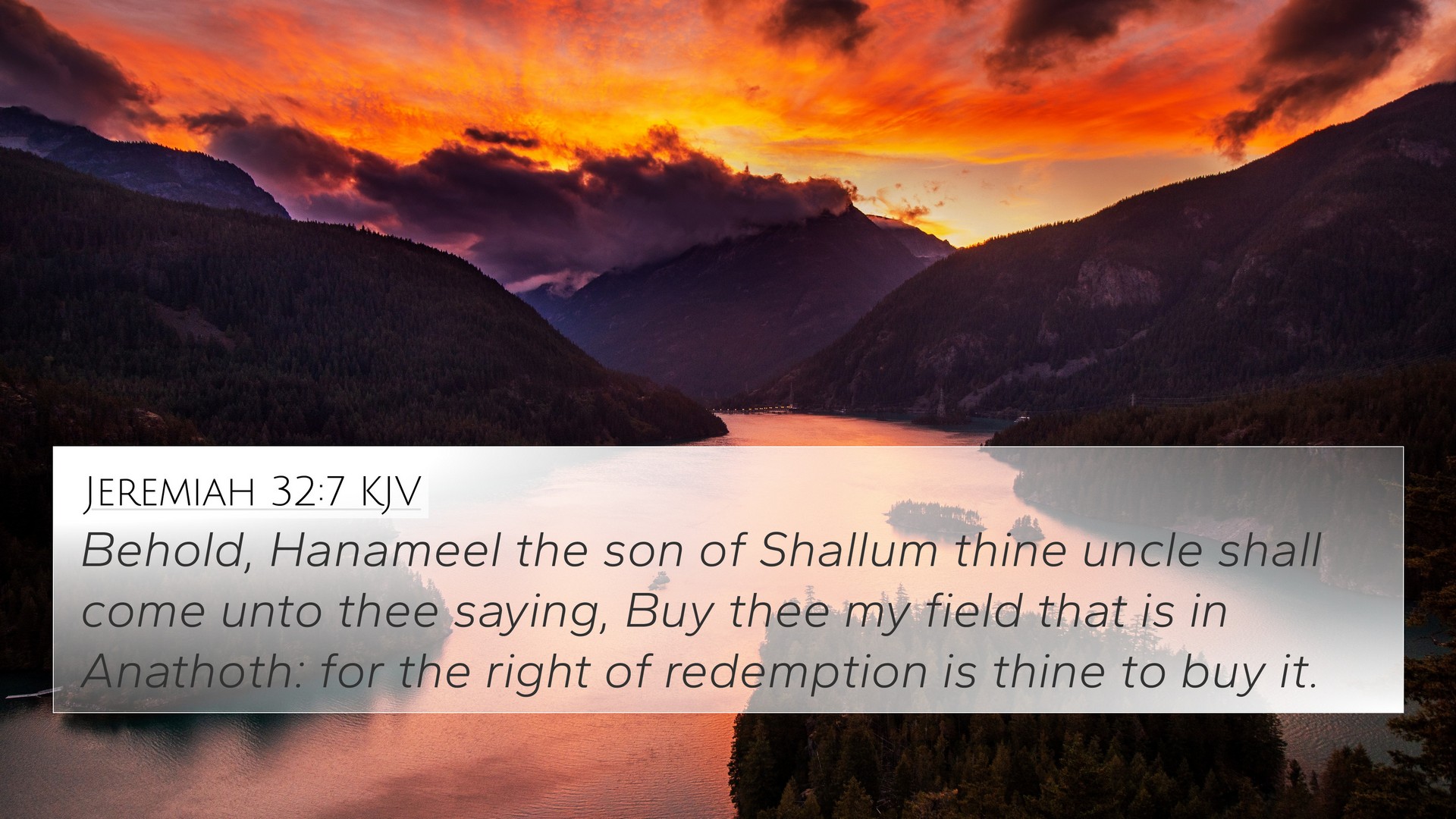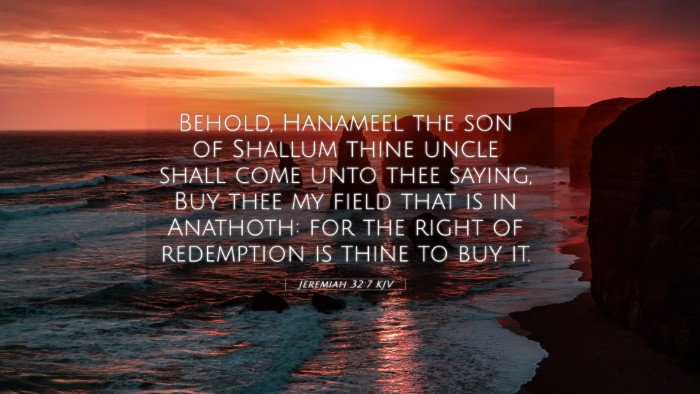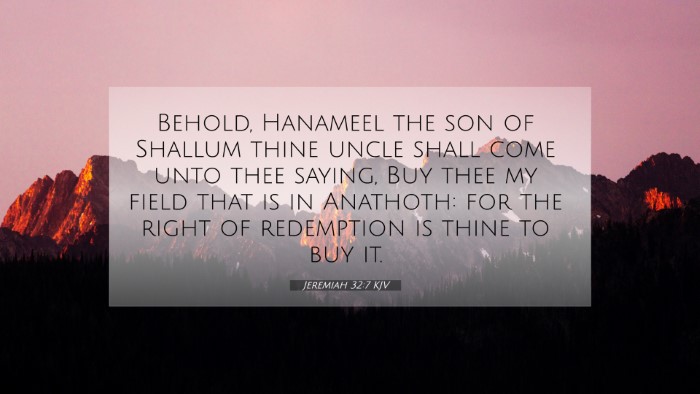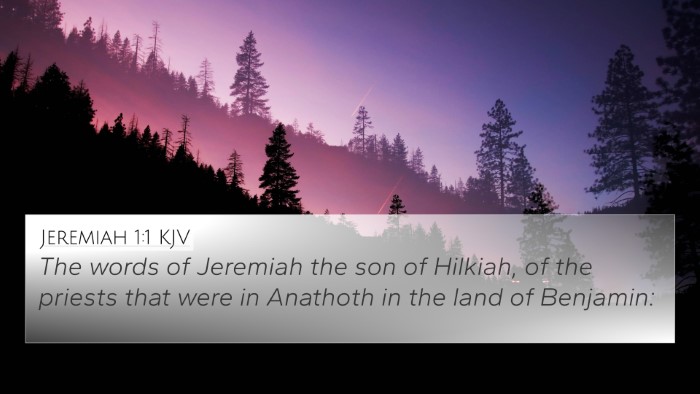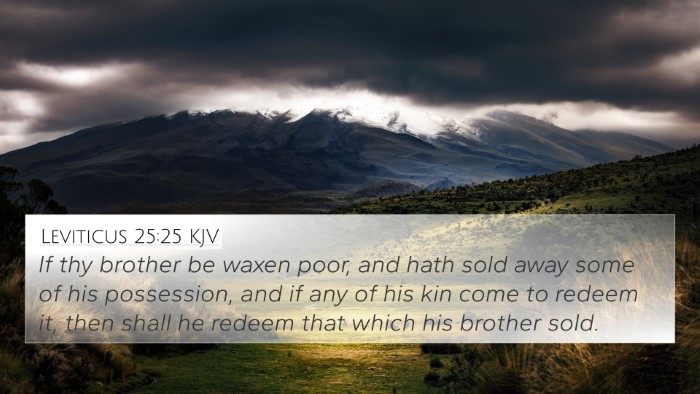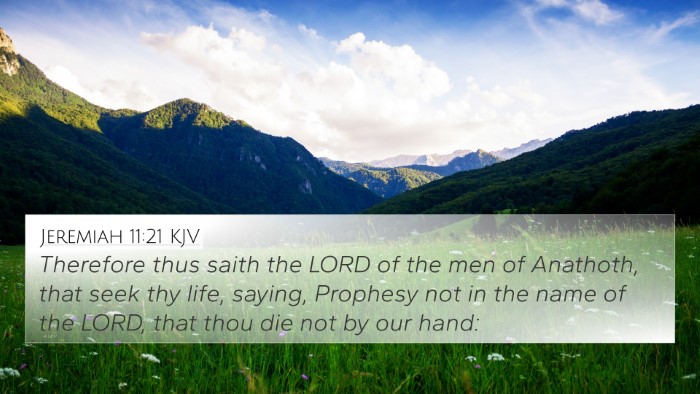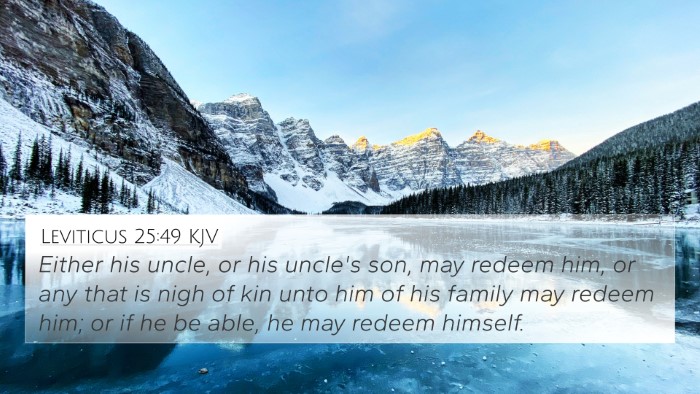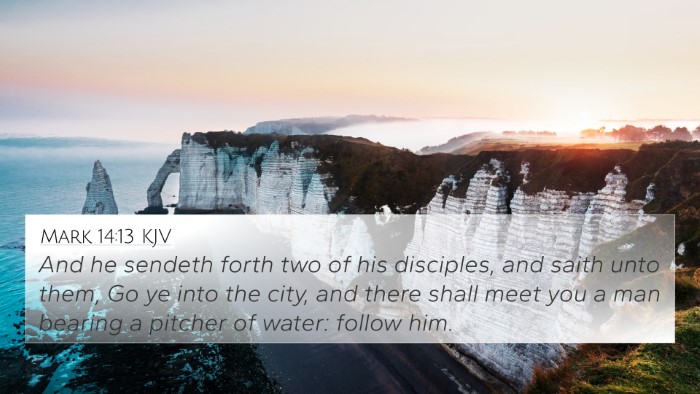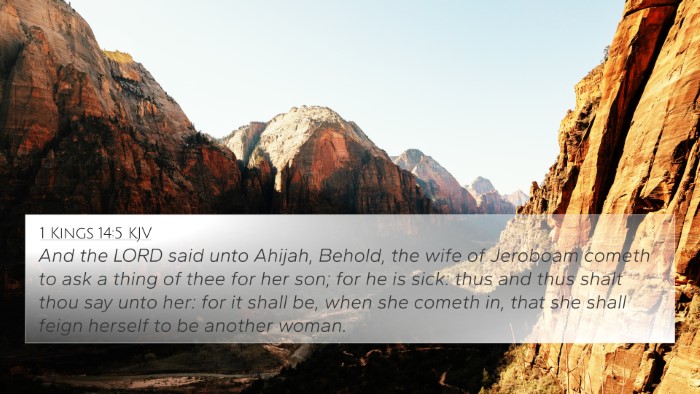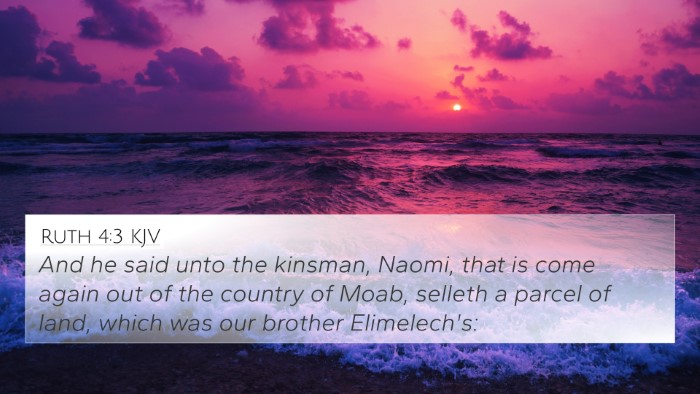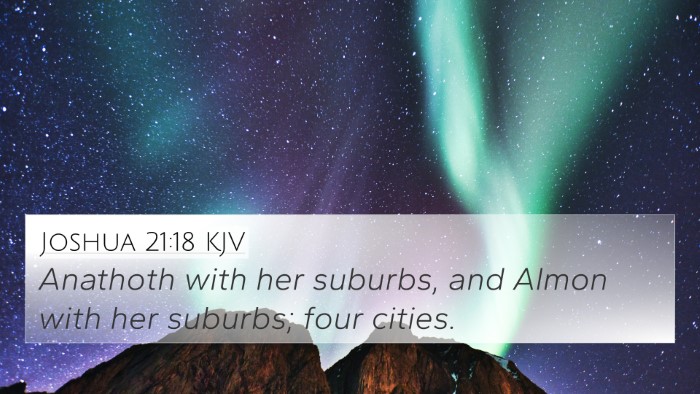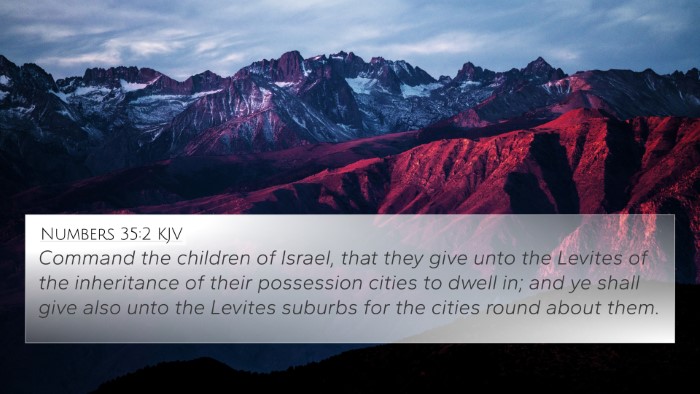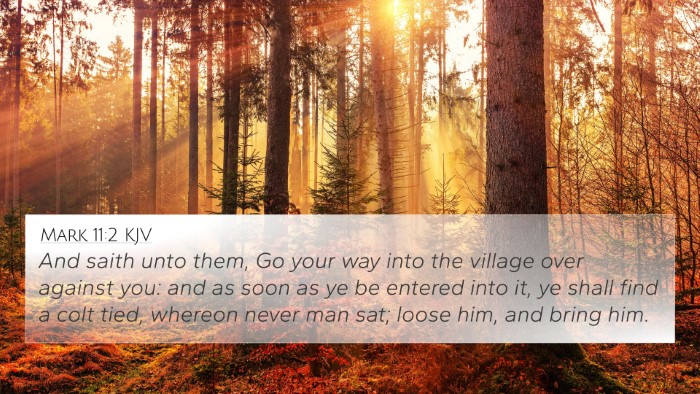Understanding Jeremiah 32:7
Jeremiah 32:7 states: "Behold, Hanameel the son of Shallum thine uncle shall come unto thee, saying, Buy thee my field that is in Anathoth: for the right of redemption is thine to buy it." This verse reflects a significant act of faith and a profound insight into God’s plans, as interpreted by various public domain commentaries.
Context and Significance
The context of Jeremiah 32 reflects the daunting circumstances faced by the nation of Israel during the Babylonian siege. Jeremiah, imprisoned yet receiving divine revelations, navigates through profound themes of faith, redemption, and the promise of restoration.
Commentary Insights
-
Matthew Henry's Commentary: Matthew Henry emphasizes the prophetic importance of this act of buying a field. He notes that it symbolizes hope amidst despair; Jeremiah's purchase is a testimony of faith in God's promises, assuring that Israel will once again inherit their land.
-
Albert Barnes' Notes: Albert Barnes highlights the theme of redemption intrinsic to this verse. He explains how the right of redemption under the Jewish law represented not just ownership, but the reassurance of familial continuity and restoration, suggesting that God's covenant promises are not nullified by temporal distress.
-
Adam Clarke's Commentary: Adam Clarke further elucidates the legal implications of the purchase, tying it back to the practice of the kinsman-redeemer. He illustrates the depth of God’s provision for His people, reinforcing the belief that divine plans encompass future restoration beyond present trials.
Bible Verse Cross-References
This verse connects with several other scriptures, enhancing our understanding through cross-referencing. Here are some relevant passages:
- Leviticus 25:25: Discusses the concept of the kinsman-redeemer, which adds context to Jeremiah's right to buy back the field.
- Isaiah 61:3: Speaks of comfort and restoration, resonating with the hopeful message of Jeremiah’s act.
- Hebrews 11:1: Reflects on faith as assurance and conviction, paralleling Jeremiah's faith in God’s promises.
- Ezekiel 37:21-22: The promise of restoration for Israel, similar to the hope reflected in Jeremiah's purchasing of the field.
- Ruth 4:1-6: An example of the kinsman-redeemer concept, demonstrating how these themes recur in Biblical narrative.
- Jeremiah 29:10-11: God's promise of a return and future for Israel, echoing the sentiments in Jeremiah 32.
- Matthew 5:5: The Beatitudes line up with the theme of the meek inheriting the earth, linking this to God's larger narrative.
Thematic Connections
Cross-referencing Biblical texts enhances our understanding of how Jeremiah 32:7 fits into the overarching themes of redemption, hope, and restoration:
- Hope in Despair: The act of purchasing signifies hope during the siege.
- Faith in Promise: It reflects unwavering faith in God's covenant.
- Redemption Themes: Embodies the law of redemption pivotal in God’s relationship with Israel.
Cross-Referencing Techniques
Utilizing tools for Bible cross-referencing can unfurl the depth of scripture connections:
- Use a Bible concordance to trace recurring themes and terms.
- Bible cross-reference guides help in identifying parallels between verses.
- Employ cross-reference Bible study methods for comparative analysis.
Conclusion
Jeremiah 32:7 stands as a beacon of hope and a powerful testament of faith in God’s redemption plan. Through detailed cross-referencing and analysis, we uncover a rich tapestry of connections that enhance our understanding of scripture, making this verse invaluable for both personal study and sermon preparation.
Further Study
To dive deeper into the connections between Bible verses, explore methods for identifying the connections between Old and New Testament teachings, or assess comparative studies of Pauline epistles. Understanding these dynamics allows for enriched Bible study experiences.
